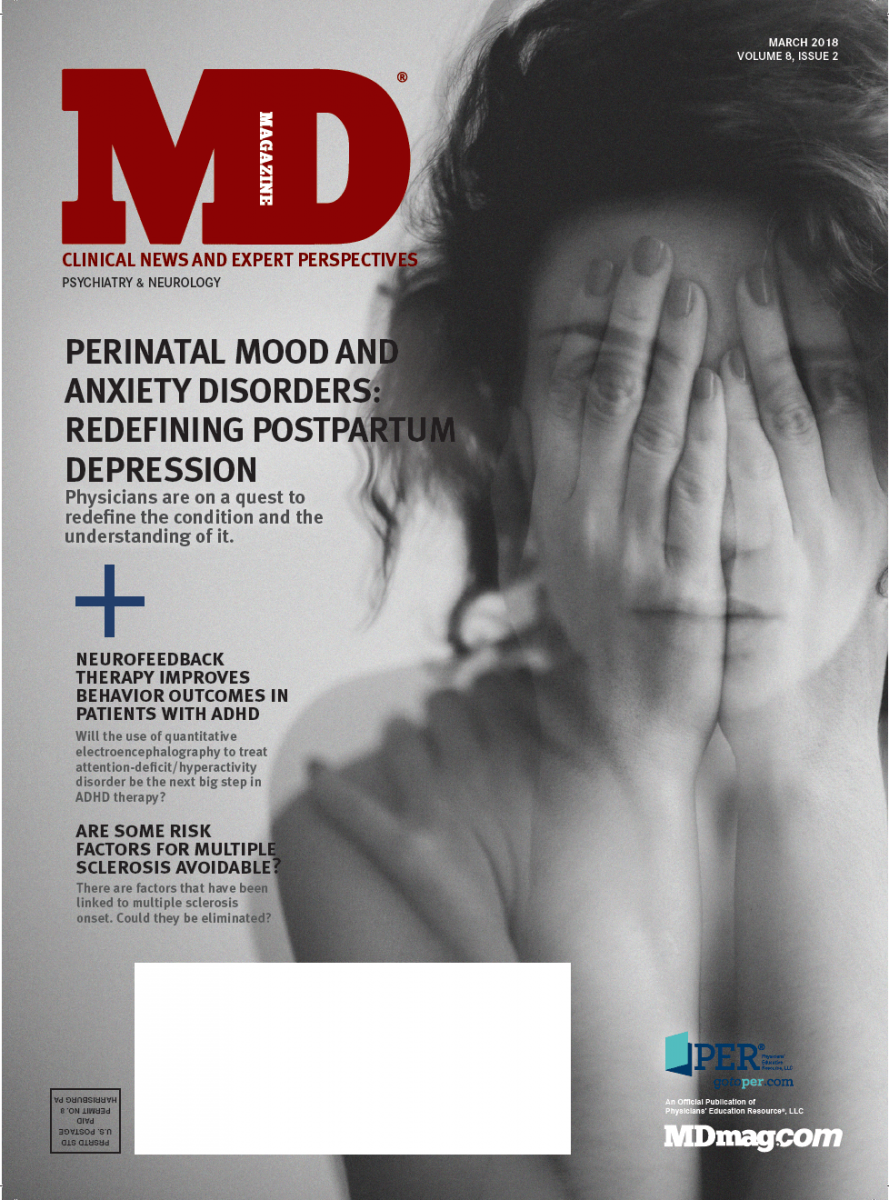Publication
Article
MD Magazine Neurology
Neurofeedback Therapy Improves Behavior Outcomes in Patients With ADHD
Author(s):
Relying on qEEG to map the grid of brain waves, physicians can use neurofeedback therapy to train themselves to improve behavioral outcomes, such as sharper focus and reduced distractibility.
Physicians have used neurofeedback therapy to effectively treat anxiety, depression, mood disorders, posttraumatic stress disorder, and, more recently, attention-deficit/hyperactivity disorder (ADHD). Relying on quantitative electroencephalography (qEEG) to map the grid of brain waves, physicians can use neurofeedback therapy to train themselves to improve behavior outcomes, such as sharper focus and reduced distractibility.
“It is a very different way of thinking about people’s problems,” Robert Reynolds, PhD, founder of The Reynolds Clinic in Middletown, Connecticut, told MD Magazine. “As therapists, we’re often trained to think about problems psychodynamically, not neurophysiologically. This is a paradigm shift in terms of understanding what causes problems.”
Clinical studies using qEEG to produce brain wave maps have shown a correlation between patterns of abnormal brain waves and certain behaviors. Patients with ADHD show a greater ratio between the resting theta waves and the faster beta waves compared with their age- and sex-equivalent peers without ADHD, with less ability to stay focused on a task. These quantitative data are an objective indicator of cortical dysregulations that can be improved through training patients to create better pathways through physician-guided operant conditioning.
“The patient comes into the office and does the qEEG, and the doctor sets the protocol based on the results of the qEEG,” Robert Reiner, PhD, executive director and founder of Behavioral Associates in New York, New York, told MD MagazineÒ. “It’s [an interactive video of] 2 people running a race, and the more your brain is going into a ‘good spot,’ the more it is producing beta waves, and you’re less distracted. So it is really great for kids—they do not even know they are being treated sometimes.”
“The overall benefit of neurofeedback amounts to increased self-regulation,” Reynolds said, “whether that is better regulation of anxiety, emotional states, attentional issues, or behavioral issues. If you can identify which parts of the grid are not operating optimally, then you can begin to train those parts of the brain to come online more effectively, and it basically strengthens the entire grid.”
Visual, auditory, and tactile feedback provides affirmation to patients using neurofeedback devices, such as Deymed Diagnostic neurology-grade equipment, while under supervision from their physician in the office. The patient progresses through the treatment and continues to receive rewards for attention, thus creating stronger neurological pathways for improved performance.
“When the mind goes off the protocol, which is a sign of distractibility and impulsivity, I’m able to fine-tune and maybe adjust that person’s protocol,” David Sitt, PsyD, a clinical psychologist, the founder and president of the Mindful Consulting Group, and a lecturer in the Department of Psychology at Baruch College in New York, New York, told MD Magazine. “Maybe instead of inhibiting distraction, I might decide to use a protocol that has to do with rewards. I could tweak in theory the protocol for different types of brains [of patients with ADHD].”
Newer technological advances allow physicians the option of treating patients with ADHD with home-based neurofeedback. The Muse is a 3-channel headband that, when placed over the forehead, produces EEG feedback. Used with Myndlift software, this allows a clinician to give the Muse to a client and monitor the feedback and create a protocol for that client based on their ADHD and their specific type of ADHD symptomology. A fourth electrode can be added to produce more sensitive EEG feedback.
“It wasn’t until hardware developers started using a qEEG cap that you’d have a 19-channel EEG reader and could get a full mapping of various electromagnetic movements in the brain,” Sitt, who has incorporated home-based neurofeedback into his practice with positive results, said. Sitt finds that his patients are more compliant with home-based treatment, as it reduces the number of office visits they must make.
“Patients know that their doctor can see everything they do,” Reiner said. “We can see who’s not being compliant. With the dashboard, we can follow every patient, tweak their protocol as they progress, and have them come in every 2 months for another qEEG. It has completely transformed the way we work. The idea that people can do this at home right now speeds up the progress tremendously. It’s been very clear to me that patients are better off doing four 10-minute sessions every other day than coming into a therapist’s office once a week and doing 40 minutes of neurofeedback/biofeedback.”
Home-based neurofeedback devices can be used by children, adolescents, and adults with ADHD. Patients are trained in the office, and physicians are alerted when they log on to the program (usually from an app on their phone). Information about the patient’s session length and results and any technical difficulties are also accessible to the physician, who has capability to adjust treatment settings. Some physicians prefer to conduct neurofeedback therapy in the office, for increased supervision, especially for pediatric patients.
“The problem I have with [home units] is that I cannot monitor them; they are dependent on parental administration,” said Reynolds. “I think it puts them in an unfair position. I think the issue is one of sensitivity, and I’ve found the Deymed system to be the most sensitive.”






